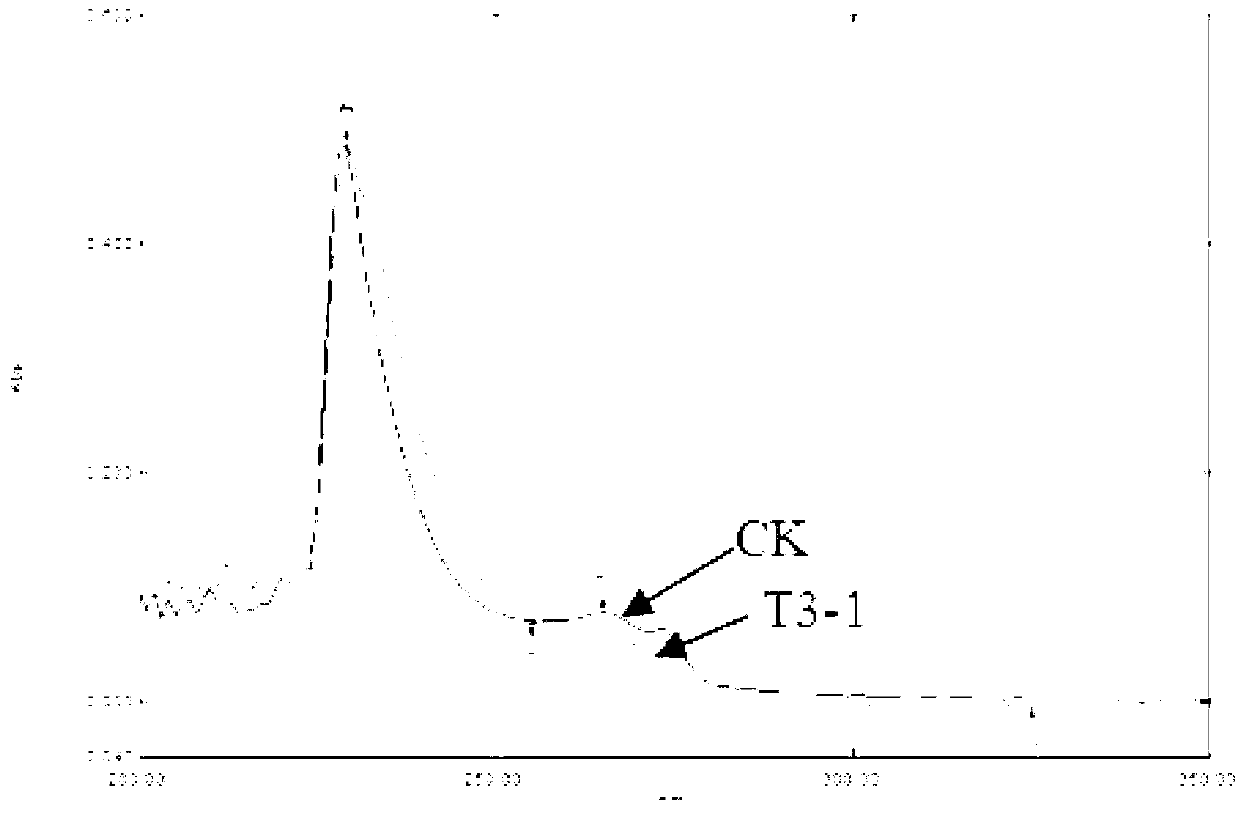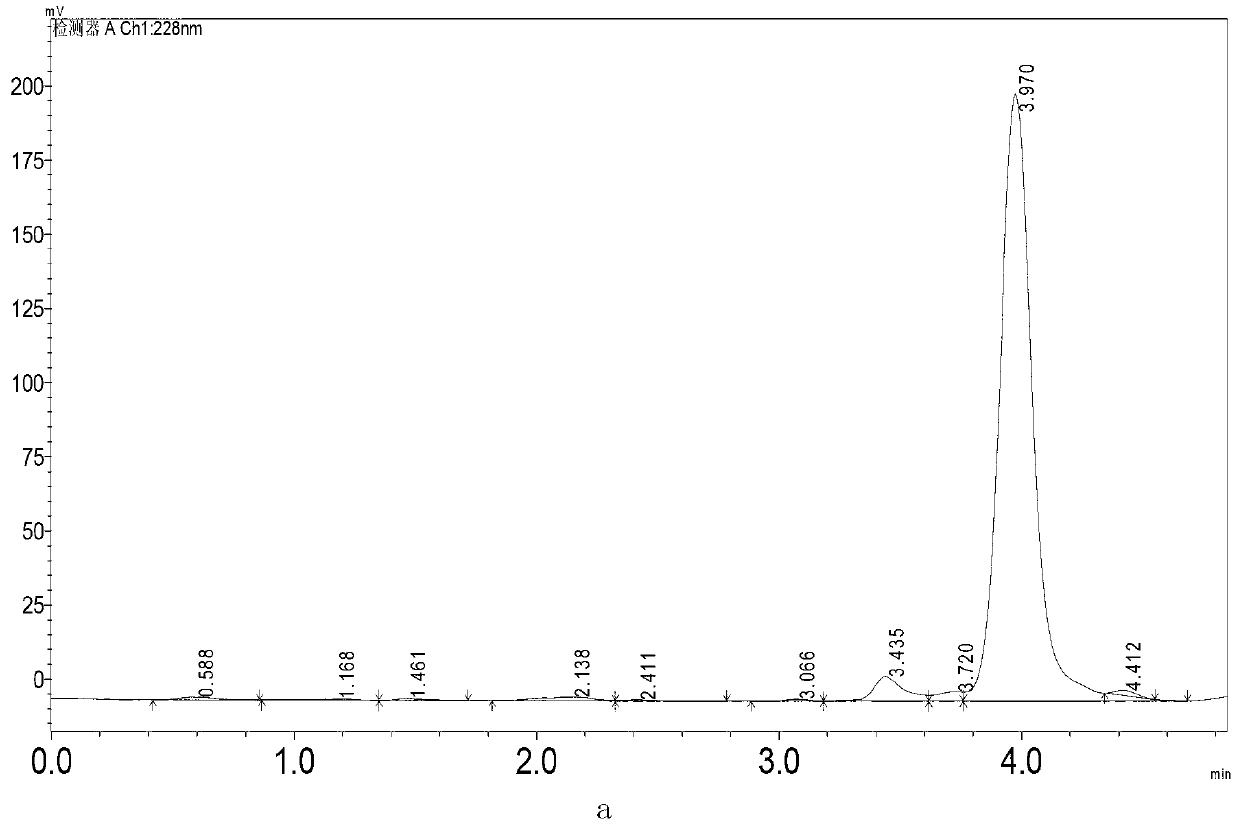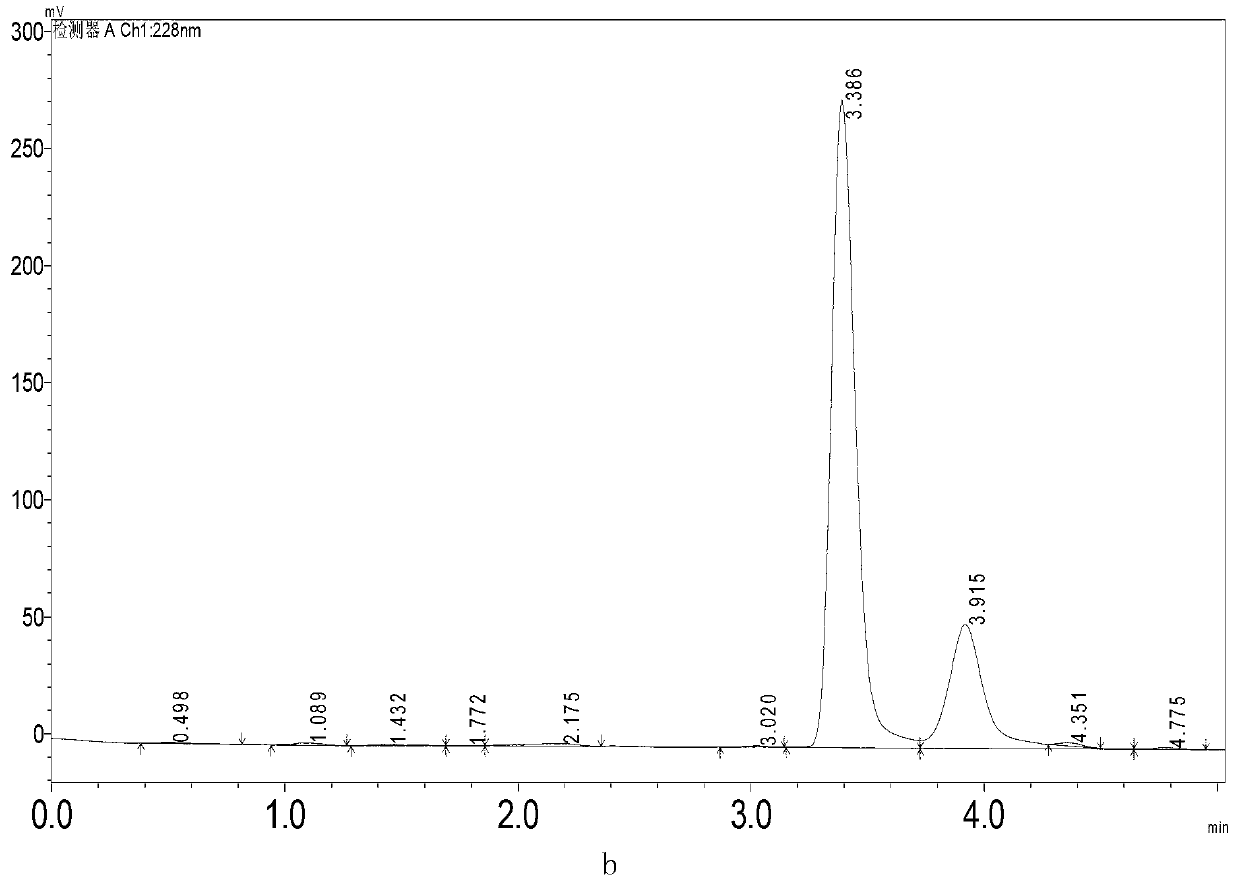Microorganism composition for degrading acetochlor and/or butachlor and application of microorganism composition
A microbial composition, the technology of acetochlor, applied in the directions of microorganisms, microorganisms, microorganism-based methods, etc., can solve the problem of low degradation ability of acetochlor
- Summary
- Abstract
- Description
- Claims
- Application Information
AI Technical Summary
Problems solved by technology
Method used
Image
Examples
Embodiment 1
[0044] Example 1: Screening and isolation of acetochlor-degrading strain Rhodococcus sp.T3-1
[0045] Take 5g soil sample and place in 100mL containing 25mg·L -1 Acetochlor-enriched medium (g L -1 : NH 4 NO 3 1.0, KH 2 PO 4 0.5,K 2 HPO 4 1.5, NaCl1.0, MgSO 4 ·7H 2 O0.1, yeast juice 0.02, pH7.0. ), at 30°C, 180r·min -1 Culture 5d. The degradation of acetochlor by the enrichment solution was measured with a UV scanner, and it was found that after acetochlor was degraded, it was inserted into 50mg·L with a 10% inoculation amount -1 In the acetochlor enriched medium, continue to enrich and measure the degradation, follow this method until the concentration of acetochlor increases to 100mg·L -1 , and passaged 3 times.
[0046] The acetochlor-enriched solution was serially diluted and then spread on LB plates and mixed with 100 mg·L -1 MSM plates with acetochlor as the only carbon source (inorganic salt medium, g L -1 : NH 4 NO 3 1.0, KH 2 PO 4 0.5,K 2 HPO 4 1.5...
Embodiment 2
[0050] Example 2: Screening and isolation of 2'-methyl-6'-ethyl-2-chloroacetanilide-degrading strain Delftia sp.T3-6
[0051] The different forms of single colonies obtained by streaking in Example 1 were purified and inoculated in 3mL liquid LB medium for culture, the bacteria were collected by centrifugation, and inoculated in the culture medium containing 25mg / L 2'-methyl-6'-ethyl-2 In the inorganic salt medium of -chloroacetanilide, at 30°C, 180r·min -1 After incubating on a shaking table for 2 days, add an equal volume of dichloromethane to the sample to be determined, vibrate vigorously for 1 min, let it stand for stratification, suck out the water phase, add enough anhydrous sodium sulfate to remove the residual water in the dichloromethane, and Ultraviolet scanning is carried out in the wavelength range of 200-350nm, and the maximum absorption peak of 2'-methyl-6'-ethyl-2-chloroacetanilide is 228nm. Degradability of 6'-ethyl-2-chloroacetanilide. Through ultraviolet s...
Embodiment 3
[0054] Example 3: Screening and isolation of 2-methyl-6-ethylaniline degrading strain Sphingobium sp.MEA3-1
[0055] With the single colonies of different forms obtained by streaking in Example 1, after purification, they were inoculated in 3mL liquid LB medium and cultivated for 24h, and were inoculated with 5% inoculum in the culture medium containing 50mg / L2-methyl-6-ethylaniline ( MEA) inorganic salt medium (g L -1 : NH 4 NO 3 1.0, KH 2 PO 4 0.5,K 2 HPO 4 1.5, NaCl1.0, MgSO 4 ·7H 2 O0.1, pH7.0. ), at 30°C, 180r·min -1 After 2 days of incubation on a shaking table, extract with dichloromethane, and detect the degradation of MEA by ultraviolet scanning. -1 The MEA is completely degraded ( Figure 8 ), through identification, the strain belongs to the genus Sphingobium. Named Sphingobium sp.MEA3-1. The accession number of 16SrRNA in Genbank is JN595860.
[0056] Inoculate a single colony of Sphingobium sp.MEA3-1 in 3mL liquid LB medium, 30°C, 180r min -1 Cultivate...
PUM
| Property | Measurement | Unit |
|---|---|---|
| diameter | aaaaa | aaaaa |
Abstract
Description
Claims
Application Information
 Login to View More
Login to View More - R&D
- Intellectual Property
- Life Sciences
- Materials
- Tech Scout
- Unparalleled Data Quality
- Higher Quality Content
- 60% Fewer Hallucinations
Browse by: Latest US Patents, China's latest patents, Technical Efficacy Thesaurus, Application Domain, Technology Topic, Popular Technical Reports.
© 2025 PatSnap. All rights reserved.Legal|Privacy policy|Modern Slavery Act Transparency Statement|Sitemap|About US| Contact US: help@patsnap.com



